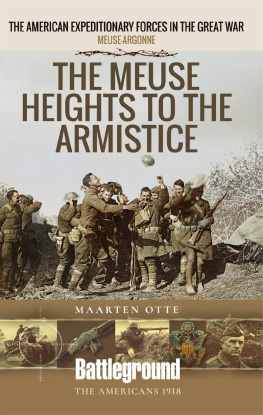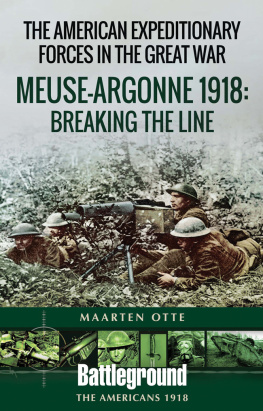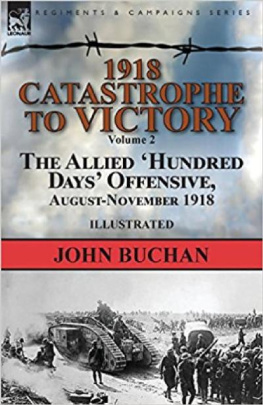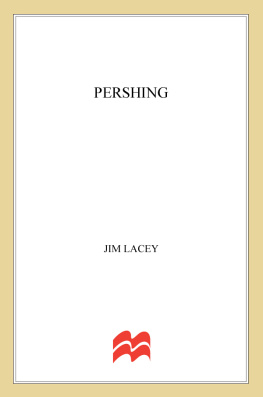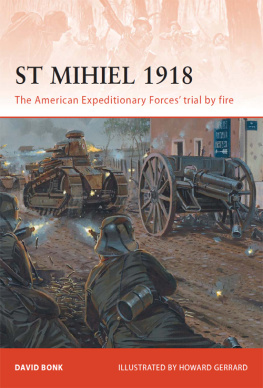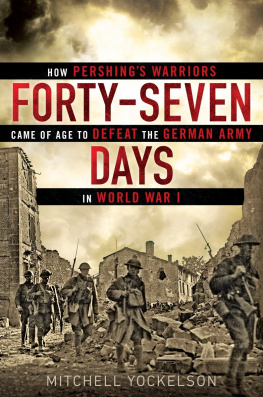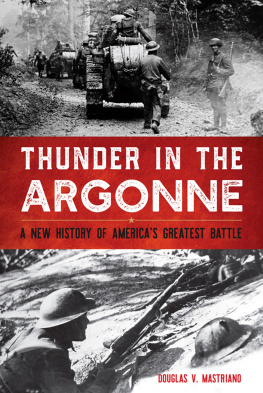Maarten Otte - The Meuse-Argonne 1918: The Right Bank to the Armistice
Here you can read online Maarten Otte - The Meuse-Argonne 1918: The Right Bank to the Armistice full text of the book (entire story) in english for free. Download pdf and epub, get meaning, cover and reviews about this ebook. City: Barnsley, year: 2022, publisher: Pen and Sword Military, genre: History. Description of the work, (preface) as well as reviews are available. Best literature library LitArk.com created for fans of good reading and offers a wide selection of genres:
Romance novel
Science fiction
Adventure
Detective
Science
History
Home and family
Prose
Art
Politics
Computer
Non-fiction
Religion
Business
Children
Humor
Choose a favorite category and find really read worthwhile books. Enjoy immersion in the world of imagination, feel the emotions of the characters or learn something new for yourself, make an fascinating discovery.
- Book:The Meuse-Argonne 1918: The Right Bank to the Armistice
- Author:
- Publisher:Pen and Sword Military
- Genre:
- Year:2022
- City:Barnsley
- Rating:5 / 5
- Favourites:Add to favourites
- Your mark:
The Meuse-Argonne 1918: The Right Bank to the Armistice: summary, description and annotation
We offer to read an annotation, description, summary or preface (depends on what the author of the book "The Meuse-Argonne 1918: The Right Bank to the Armistice" wrote himself). If you haven't found the necessary information about the book — write in the comments, we will try to find it.
Eventually sufficient resources were allocated for an American-French attack on the right bank, with the aim of removing the German artillery and pushing the Germans off the Meuse Heights, part of the renewed offensive on the Left Bank and the Argonne Forest.
The action often took place over ground that had already seen ferocious fighting during the Battle of Verdun in 1916 and the French offensive of late summer 1917. It also involved the very difficult achievement of getting large bodies of troops over the River Meuse and its associated canal.
The terrain is rugged and, even then, quite heavily wooded. The American and French troops often had to fight uphill and in the face of German defences that had been developed over the previous twelve months. On the other hand, the quality of the defending troops was not high, as Germany faced so much pressure in other sectors, and included a significant number of Austro-Hungarian troops. Popular opinion tends to be dismissive of the fighting quality of these Austrian troops who, in fact, performed well.
The tours take the visitor over some beautiful countryside, with stunning views over the Meuse and the Woevre Plain. There are significant vestiges of the war still to be seen, including numerous observation bunkers and shelters as well as trenches. An unusual feature of the area are the traces of part of the Maginot Line, notably bunkers (some of which are very large) and the rail infrastructure to support it, sometimes making use of lines that the Germans built during the First World War.
One of these tours follows the fate of Henry Gunther, officially the last American soldier to be killed in action in the Great War. There is substantial myth about Gunther; the facts surrounding his death are examined, as well as placing his last action on the ground. There is a tour dedicated just to him.
Maarten Otte: author's other books
Who wrote The Meuse-Argonne 1918: The Right Bank to the Armistice? Find out the surname, the name of the author of the book and a list of all author's works by series.

